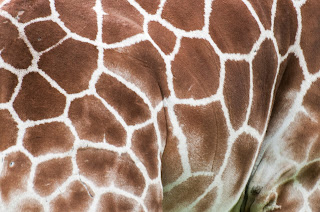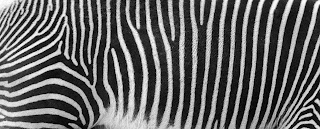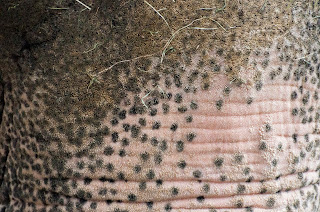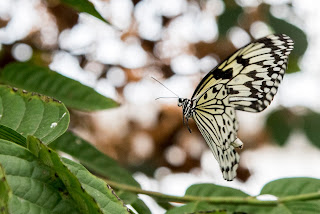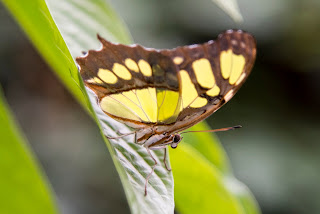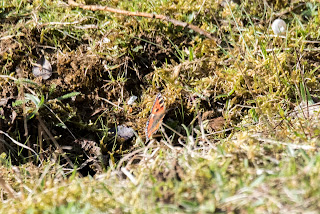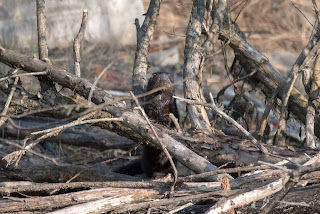After dropping my wife off to play tennis today, I took my camera for a quick walk around an abandoned sand pit that had been allowed to grow wild, before picking her up an hour later.
A beautiful afternoon, with nothing in particular to see, only the usual birds, like this magpie sitting high up in a tree...
....a mute swan feeding,...
...a Peacock butterfly resting (and feeding) on blossom...
....and a blue tit feeding on a willow thicket.
I dropped down to the edge of the second pit, and saddened by the rubbish in the corner, I was about to leave as there were no waterfowl on this pit lake, when my eye caught a movement in amongst the rubbish about 50 yards away...
Quickly pointing the camera, I managed to catch this shot. To my surprise it was either an otter or mink.
It spotted me and turned away and disappeared behind the rubbish, not to appear again despite watching for 5 minutes more.
Looking at the guides online, I am pretty certain it was a Mink lacking the large off-white throat that the Otter has. Thinking back, I don't think it was as large as the few otters I have seen in my life. However, I could not find any photos of a Mink with the small white throat patch seen in these photos.
I have mixed feelings about Mink, a non-native species which are partly responsible for the demise of the water vole. I would have been much happier to have seen an otter (I was advised by fishermen that there are some within 15 miles of my town some years ago). But all the same it was good to capture photos of such a shy animal.



